Like everyone else, I had hoped that after our tiring though eventful ten hour bus trip from Pyongyang to Hamhung we would call it a day and head for our hotel. That was not to be. The day’s itinerary showed that we still had a fertiliser factory to visit and, notwithstanding that we were running a couple of hours late, visit it we did!
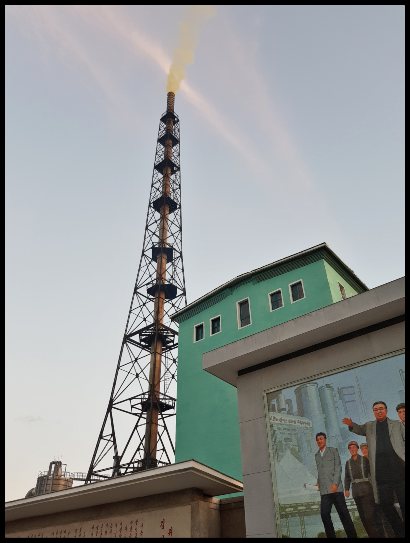
We pulled into the factory grounds just as dusk was coming upon us. As we got out of the bus to stretch our legs, we were told that because we had arrived late our tour would be restricted. Instead of getting into the main factory areas, which had closed for the day, we would have a look around outside such that we would not miss out completely on hearing of the exploits of, and the guidance given by, the Leaders in regards to fertiliser. That last bit was my interpretation and not our guide’s wording though that is, of course, exactly what we would be hearing.
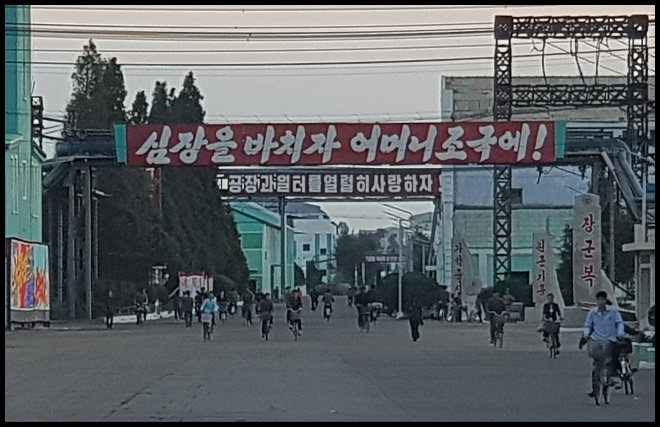
Prior to jumping back on the bus to drive to the ammonia synthesis plant (as you do) we had time to have a look around the entrance area which was suitably adorned with adulations to the Leaders and billboards and inspirational banners spurring the workers to give their best. Naturally, there are many more of these throughout the plant and within the buildings.
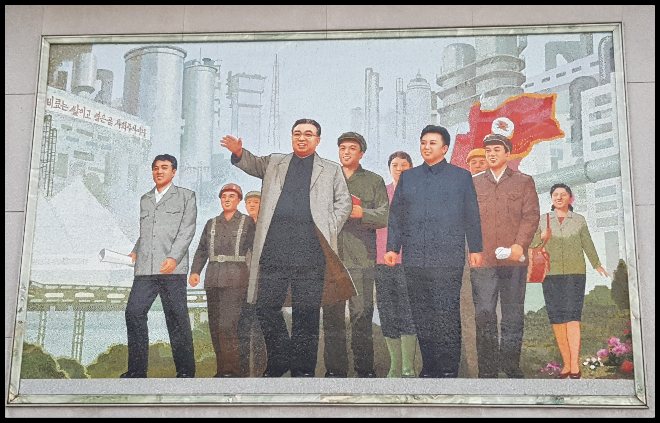
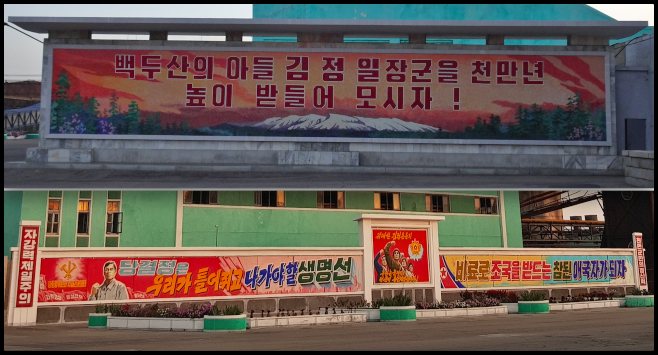
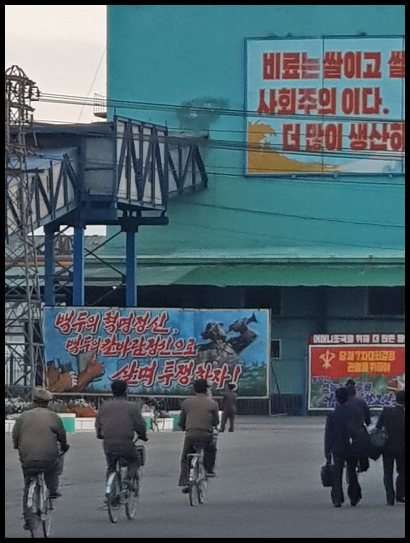
As I have noted elsewhere in this blog, given the recent (mid 2018) improvements in relations between Kim Jong-un and Donald Trump, right across North Korea anti-American billboards, posters, postcards and other forms of anti- American propaganda had been removed from public view, as a good-will gesture by Kim Jong-un. Given the volume of such propaganda right across the country and into every town and village it was inevitable that some would be missed, in addition to the odd bit that might have been ‘overlooked’ due to local conditions. We came across one such piece here depicting (lest you cannot see it clearly in my image below) a sledge hammer smashing the US Capitol building in Washington, unshackling North Korea from the US. Based on earlier pictures I have seen of the interior of the factory similar anti-American sentiments were expressed via large billboards and posters.
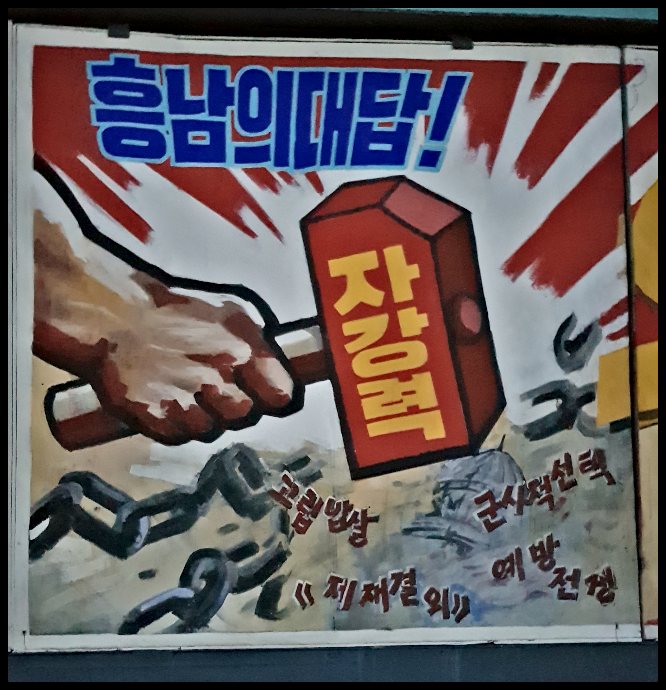
My initial thoughts on why this billboard remained, in a prominent site visited by tourists, was that it was a deliberate oversight by local officials – who were less acquiescent to dalliances with the enemy than Kim Jong-un. On reflection I recall that Hamhung was, to the degree permitted in North Korea, a problem child that has, on occasion, been known to rebel against Pyongyang. So was this still being on view a subtle act of rebellion or an accidental oversight? Perhaps I am overthinking things.
One of the billboards I particularly liked at the factory is that depicted below – a piece which takes a post Korean War appeal by Kim Il-sung and updates it to more recent times.
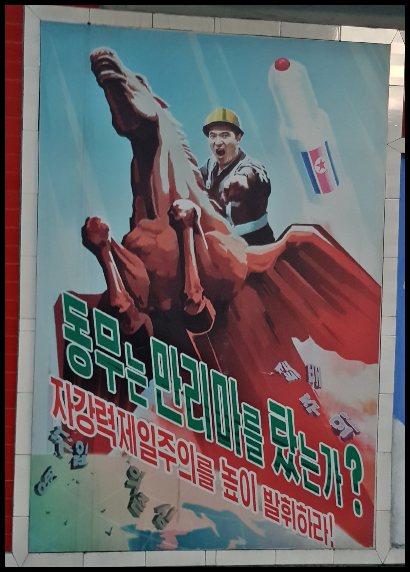
The winged horse, ridden here by an enthusiastic worker, is the mythical Chollima, from the Chinese classics. Chollima travelled at the lightening speed of a thousand li (400kms) per day.
After the destruction wrought upon North Korea during the 1950-1953 Korean War Kim Il-sung was left with the unenviable task of rebuilding his county, from basically zero. He was keen that this redevelopment occur as quickly as possible and in 1956, shortly before the commencement of the 1957-61 five-year plan, he urged his people to ‘Charge at the speed of Chollima’ to get the country back on its feet.
Of course, if Kim Il-sung thought it proper that his people ‘charge at the speed of Chollima’ they did, as subsequently reported by Korean Central News Agency:
‘the working class and people worked hard in the spirit of taking ten, nay, one hundred steps while others taking (sic) one step and wrought epoch-making miracles in the revolutionary spirit of self-reliance.’
You can read more about Chollima, and its successor Mallima which was introduced by the current leader Kim Jong-un and travels at 4,000 kms per day, in my review – Chollima Morphs To Mallima Under Kim Jong-un.
The update to more recent times which I referred to above is, of course, the inclusion of a North Korean rocket which would travel at a speed even faster than Mallima. There is no holding these guys back!
The other type of billboard in evidence around the factory (and all other places of work we visited) are those relaying back to workers factory outputs and achievements – in terms of meeting required targets.
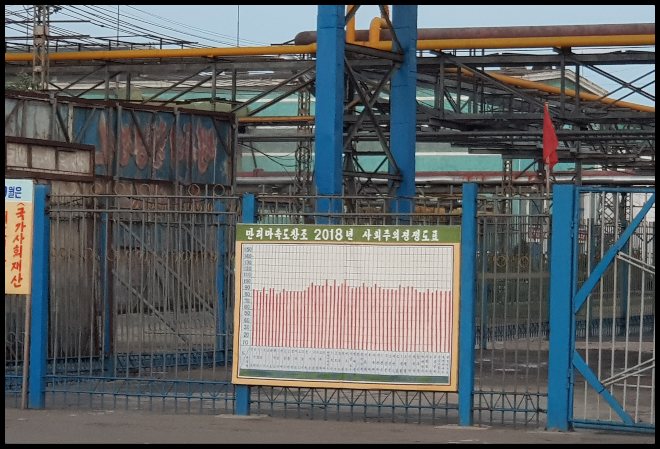
We were assured that the information portrayed on the board pictured above showed that targets were being well exceeded by the heroic workers in the Hungnam Fertiliser Factory.
While patriotic billboards and posters are a key feature in every North Korean work place and are sought out by visitors, particularly the ones belittling America, I should tell you a little about other aspects of the factory!
The fertiliser factory is located within the industrial area of Hungnam, a few kilometres outside of Hamhung which is the second largest and a major industrial city in North Korea. Also located at Hungnam, among many other factories, and, as far as I know, not open to tourist inspection, is the equally famous (or infamous, depending on your point of view) February 8 Vinalon Factory Complex which I will briefly refer to later.
Situated on the Korean East Sea (or as everyone else other than North and South Korea call it, the Sea of Japan) and ideally located for trade with Japan it comes as no surprise that Japan established Hamhung (Kankō) / Hungnam as an industrial and trading city during its occupation of the Korean peninsula (1910 to 1945). Among the businesses that the Japanese set up here was a fertiliser factory, in late 1920s/ early 1930s. This was the Chosen Nitrogen Fertiliser Complex, the largest nitrogen fertiliser and chemical complex in the Far East and a forerunner to today’s factory.
Having survived WWII, the factory, together with 80-90% of the city and thousands of civilians, were obliterated by indiscriminate American, B-29, blanket bombings, early in the Korean War.
After the war the factory was rebuilt with East German assistance, with many additions between then and now. China’s contribution to the factory’s development is recognised by a bust of Chinese Premier Zhou Enlai, on display in the factory’s museum, which we did not get to visit. While there has been significant foreign input to North Korea’s post Korean War and to its ongoing development, like the Soviet Union’s assistance in liberating the whole peninsula from the Japanese in 1945, this input tends to be understated within North Korea, such that all credit goes to the Kim dynasty. China was also a significant contributor to another factory which we visited, the Taean ‘Friendship’ Glass Factory – in the Nampo region. The word ‘Friendship’ in its name is, in fact, in recognition of the factory’s, and the country’s, close relationship with China.
Today the Hungnam Fertiliser Factory is the largest fertiliser factory in the country, employing upwards of 10,000 people, and producing a mix of superphosphate, ammonium sulfate, and ammonium nitrate fertilisers.
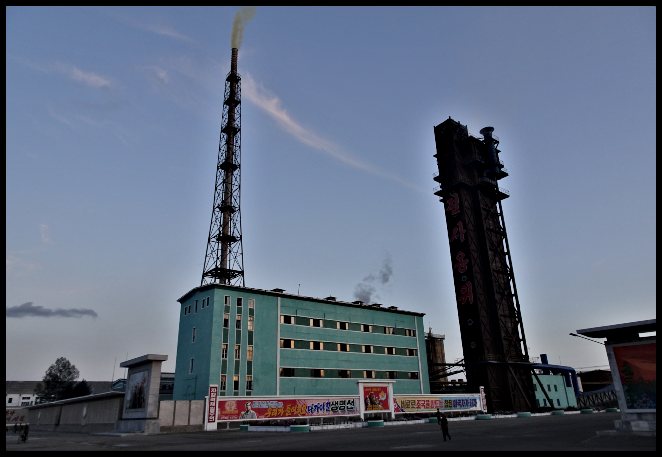
That said, between it and other fertiliser factories, including the Sunchon Phosphatic Fertiliser Factory outside Pyongyang which was just opened on 1 May, 2020 by Kim Jong-un, North Korea still only produces about one third of the fertiliser necessary to support its agricultural sector in achieving that all important goal of self-reliance in food.
Shortly after the post World War II creation of North Korea the Great Leader, Kim Il-sung, introduced his Juche ideology – a mix of Marxism, communism, socialism and to a large degree Kim’s own unique thinking. The main tenant of Juche is self-reliance.
For the outset Kim Il-sung emphasised the role of fertiliser and its importance to the country’s ideology (he hadn’t yet coined the term Juche), part of which included making North Korea self sufficient in rice. It was at this factory that he famously said, standing on top of a huge pile of fertiliser:
“Fertiliser is rice. And rice, itself, is Communism.”
Kim Il-sung, pledged to build a “people’s paradise” in which “all the people lead happy lives in tile-roofed houses with sufficient steamy rice and meat soup.”
Years later, coming out of the horrific famine of the 1990s which was especially severe in the north east and in the Hamhung area, Kim Jong-il tried to extol the virtues of replacing rice with potatoes as they were much quicker to grow and used less resources. Kim Jong-il naturally provided on the spot guidance in growing potatoes and in preparing tasty potato dishes, despite a widespread shortage of the cooking oil necessary to prepare his tasty dishes. While some potatoes are eaten in North Korea (more than in neighbouring countries, I feel) rice remains the primary and preferred staple.
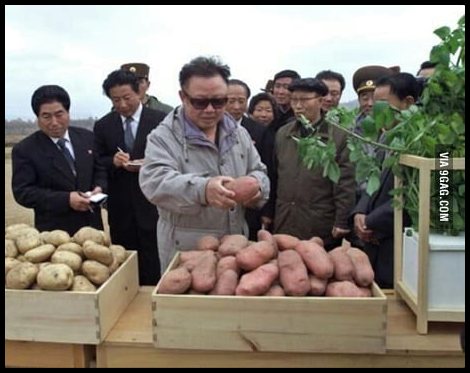
I have digressed. It was not my intention to tell you of Kim Jong-il’s fondness for potatoes in a fertiliser factory review.
Back to my actual visit and now finding ourselves at the ammonia synthesis plant our guide proceeded to outline the history of the factory, as I have above though sparing us the bit about Chinese assistance, and then proceeded to tell us about the production processes, some of which we would have seen had the factory been operating and we had been able to go inside.
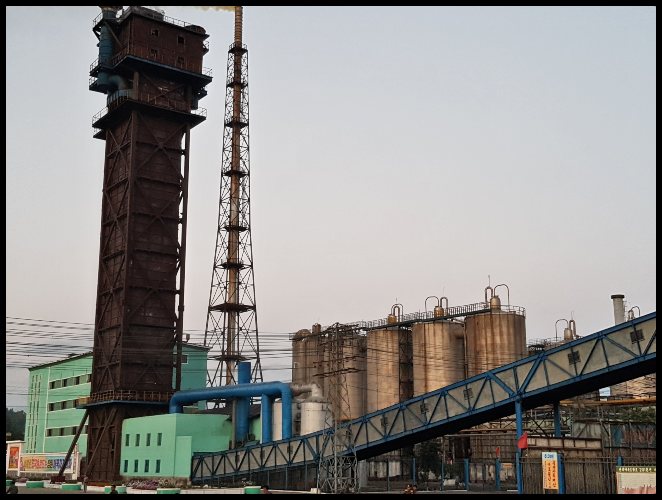
My Reader will be relieved to know that I am not going to continue with a detailed description as to how fertiliser is produced in North Korea. Indeed when the guide moved on to this part of her presentation I wandered off for a closer look at some of the billboards and plant, in the vicinity naturally, and pondered such matters as to why the guard near to where we were standing (though not guarding or watching us, I hasten to add) needed to be armed with an AK47.
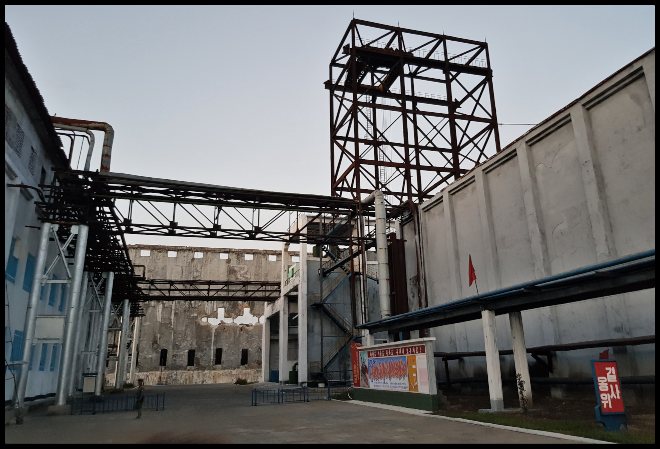
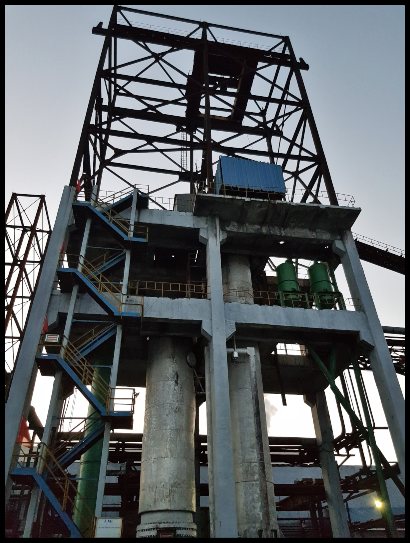
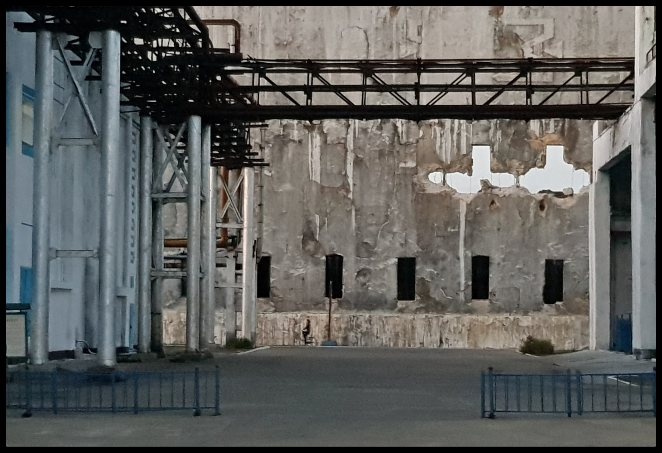
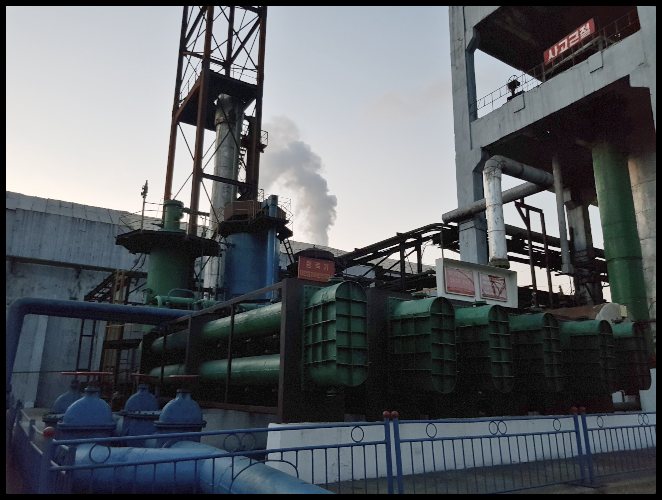
In missing the technical part of the presentation I was very confident that one topic would not be covered and that the inevitable questions there-on would not be entertained.
It is widely believed, though denied by North Korea, that this factory and to a greater extent the nearby February 8 Vinylon Factory, are key (but not the only) producers of unsymmetrical di-methyl-hydrazine (UDMH – a liquid rocket engine fuel, for those not in the know!) and other critical chemicals and components used in the development and production of nuclear weapons in North Korea.
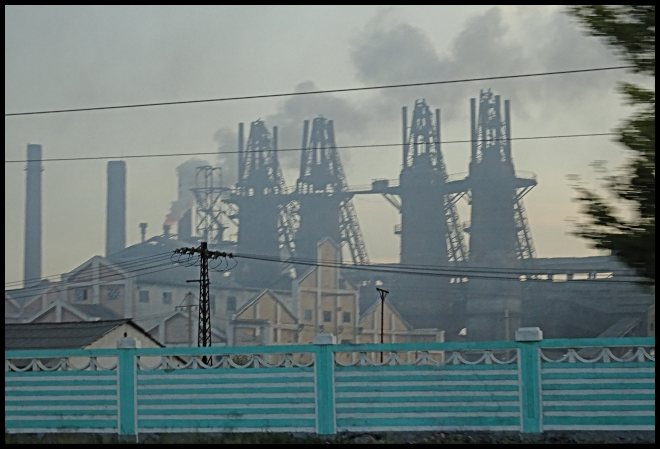
All I will, or indeed can, say about this is that there is no doubt that the necessary ingredients for nuclear weapons are produced somewhere in North Korea, as they are in many other countries around the world that also sadly choose to go down this avenue. Whether they are produced in these or other extant factories (to keep costs down, as one argument goes) as opposed to specialised production facilities, I do not know and does it really matter?
Also, I would expect North Korea to be as circumspect as to the details of its nuclear programme as any other country and it is.
At the beginning of this review I mentioned that we were unable to view any of the main production areas due to the factory having closed for the day. Later in 2018 and particularly in 2019 it was widely reported, outside North Korea, that the factory was non-operational, often for lengthy periods of time, resulting in acute shortages of fertiliser and the reassignment of up to 70% of its workforce to other projects across the country. The resultant shortage of fertiliser caused additional problems as factory employees started selling what limited supplies there was, on the black market – a crime punishable by five years in a correctional labour facility. When a good friend of mine, from London, visited in September 2019 she did not even get a partial tour on the grounds that the factory was then closed for refurbishment. As an important aside, I highly recommend my friend’s blog, on her 2019 visit, which can be accessed HERE.
One thing that visitors who have had a full factory tour often refer to is the extremely strong (nauseous) smell of ammonia outside of the factory buildings – the very place where we were. When I visited I could certainly smell ammonia but it was by no means strong which may suggest that the factory was, even in September 2018, only operating sporadically, as opposed to just being closed for the day.
Given the dearth of fertiliser in North Korea I would have expected the factory to be operating 24/7. The only logical reason for it being closed would have been a shortage of electricity (and possibly other necessary inputs such as oil) due to increased US lead sanctions resulting in the relevant suppliers being unable to deliver the necessary inputs.
By whatever means, I understand that production increased in early 2020, by which stage a liquid nutrient fertiliser capability had been added to the factory.
Once the guide had finished her presentation at the ammonia synthesis plant we made a brief stop to have a look into one of the dispatch areas which were it not for the dimming outside light would have been in almost total darkness, relying on just a few hanging, low-wattage, electric globes (bulbs) in quite a large area. This shortage of lighting perhaps adds credence to the view that electricity supply was an ongoing issue for the factory, as it is for most things within the country.
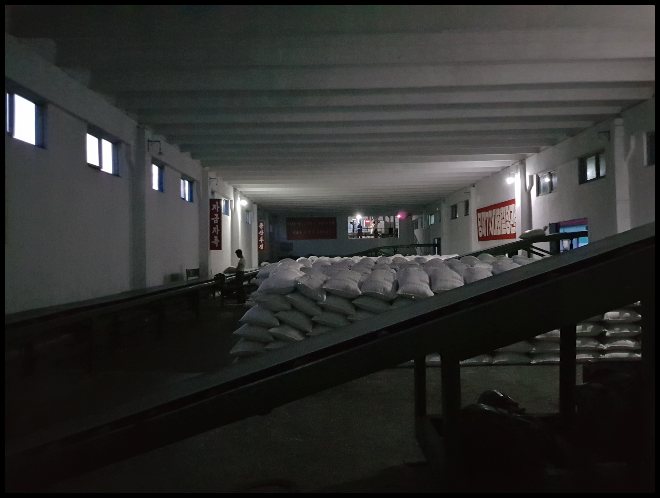
There was sufficient lighting in the lobby area to view this photograph of Kim Jong-il and his then heir apparent, Kim Jong-un, viewing one of the dispatch areas just as I did!
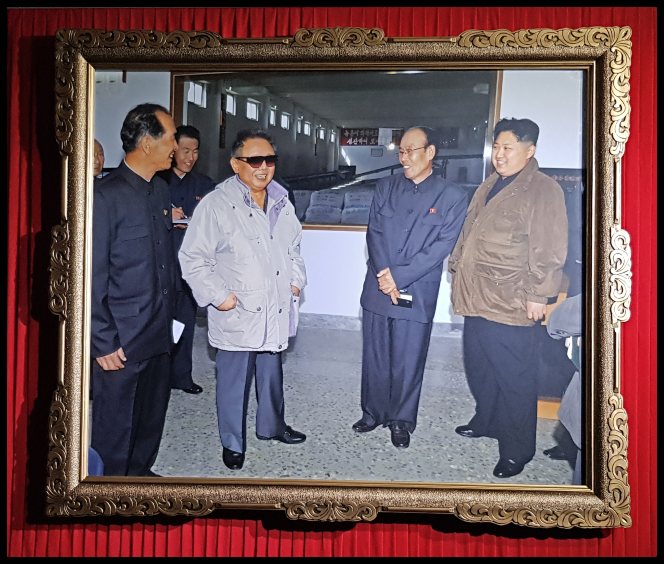
Having completed our abridged tour it was finally time to go to the hotel, the details of which I will leave for another entry!
My next North Korea – Hamhung review HERE
Start reading at the beginning of my North Korea (2018) – Hamhung reviews – HERE
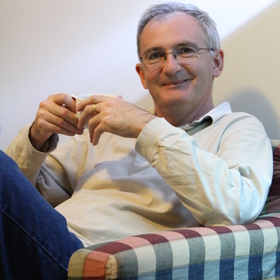

Wow, who would have thought a visit to a fertilizer factory would be interesting. I can’t help but think I’d not enjoy this occupation. The workers were not smiling you say . . . surprise! I read a book about North Korea called Nothing to Envy. It was terrifying and I think you were brave to even go there. Great post, thanks for sharing your adventures with us chickens.
LikeLiked by 2 people
Yes, Nothing to Envy is hard going. As long as you are prepared to complied with a few very simple and very clear rules you have nothing to worry about in visiting NK. Of course most people, incl me, feel apprehensive / worried before the bite the bullet and go. Once you get there fears quickly dissipate as despite what we may think of the politics they are incredibly warm and welcoming hosts. Everything in NK is at least a little different to elsewhere including fertiliser factories 🙂
LikeLike
If you found a visit to a fertliser factory interesting then you may also enjoy a visit to a plate glass factory. This time we did get inside the main factory lol. https://ramblingwombat.wordpress.com/2019/08/14/taean-friendship-glass-factory/
LikeLike
Another fascinating page Albert! I cannot help it, but I have such a hard time getting my head wrapped around the culture and all the billboards in the DPRK. This is all so alien to me! And I guess that also makes your pages and your insights of your visit so fascinating to read!
LikeLiked by 2 people
Thank you so much. It is a fascinating place and I know we talk about places being unique. This is one of the few places where that adjective can still be correctly used.
LikeLike
A place we haven’t been…i was a bit nervous crossing over from South Korea to North Korea.
LikeLiked by 2 people
Once you get over your initial nervousness it’s probably the safest country in the world to be on for a visitor if you comply with a few very clear rules.
LikeLike
Will add it to my list…when we can get back in the air
LikeLiked by 1 person
Where else would a visit to a fertiliser factory be a tourist highlight!
LikeLiked by 2 people
Exactly, if you don’t go to NK you miss out on so much in life!
LikeLiked by 1 person
Fascinating to get at least a partial glimpse inside the factory. Your group were understandably tired after such a long day and therefore less than excited about this visit, whereas some in mine (we had had a relatively easy, by DPRK standards, day) were very disappointed. I think they had hoped to pick up clues about any alternative use of the facilities beyond the production of fertiliser! Thank you, by the way, for including the link to my own DPRK blog 🙂 I didn’t realise that you had read as far as my Hamhung page 😉
More sombrely, it strikes me that this factory must almost certainly, like the warehouse in Beirut, store ammonium nitrate, and I can’t help wondering whether, from what I have seen of DPRK factory buildings, they are doing so safely? I do hope so.
LikeLiked by 2 people
The expectation that they would have picked up any alternative uses within the factory is fanciful. If they have an ulterior motive in letting tourists visit it would be to show that it is purely just a fertiliser factory, nothing more.
I wrote this review a few days ago and after the tragic explosion in Beirut I did get a bit of a shiver down my spine to think that I was standing beside an aged ammonia synthesis plant in NK.
Not surprisingly residents in the New South Wales town of Newcastle (a little north of Sydney) have become a little uneasy as there is a warehouse there storing about 4 times the amount that was in the one in Beirut. Apparently it is used in mining here.
It is my pleasure to link to your blog Sarah. I hope some of my readers have a look as it has a rather different focus. Yes, I have read most of the balance of your blog entries (one or two to go) and will make some comment shortly. They really are fantastic.
LikeLike
I don’t think my companions really thought they would get any clues to alternative uses of the factory, but they would have found it fun to try!
Thanks for the kind words about my blog – I look forward to getting your comments in due course as your alternative angle on some aspects of N Korea always adds value and rounds out my own perspective 🙂
And I will of course be adding a link to this page in my own entry about the factory, in the hopes that some of my readers might welcome the chance for a closer look!
LikeLiked by 1 person
PS link now added: https://toonsarah.travellerspoint.com/391/ I hope you approve!
LikeLiked by 1 person
Totally approve Sarah. I will direct link to some of yours too, especially your Mt Peaktu entries (when I get to an appropriate entry or entries). Still sad we didn’t get up there but that’s the way things are in NK.
LikeLiked by 1 person
Yes, it’s a shame you didn’t get to Mount Paektu – as you know, it was one of my highlights. But there were a few things we missed out on too, like this factory. In fact, we were short on factory visits generally, unlike you – the closest we came was the mushroom cultivation plant 😉
Thank you for offering to link to my entries. The more ‘cross-fertilisation’ we have, the better for both of us in terms of building readership!
LikeLiked by 1 person
What an intriguing end to your day, Albert, a mix of agricultural supplies, politics and propaganda, and possibly even nuclear weapons! I suppose they do say that ‘where there’s muck, there’s brass!’.
LikeLiked by 2 people
Love that saying Alli. Many would say that nothing in NK is as it seems – I would not go that far but there are certainly lots of surprises. .
LikeLiked by 1 person
I get that impression.
LikeLiked by 1 person
For speakers of German it is always a bit strange to read about the Korean concept of Juche, especially in relation to a fertilizer factory, because of its similarity to the German word Jauche (just one additional letter). Jauche in German means liquid manure. German farmers typically have tanks under or near their barns to collect the Jauche from their livestock. Then at certain times of year they pump it into a tank trailer (pulled by a tractor), take it out and spray it onto the fields.
LikeLiked by 2 people
I am sure Kim Il-sung would be less than impressed with you comparing this Juche to Jauche !! I spell in a re-education camp would have been the solution!
LikeLiked by 2 people